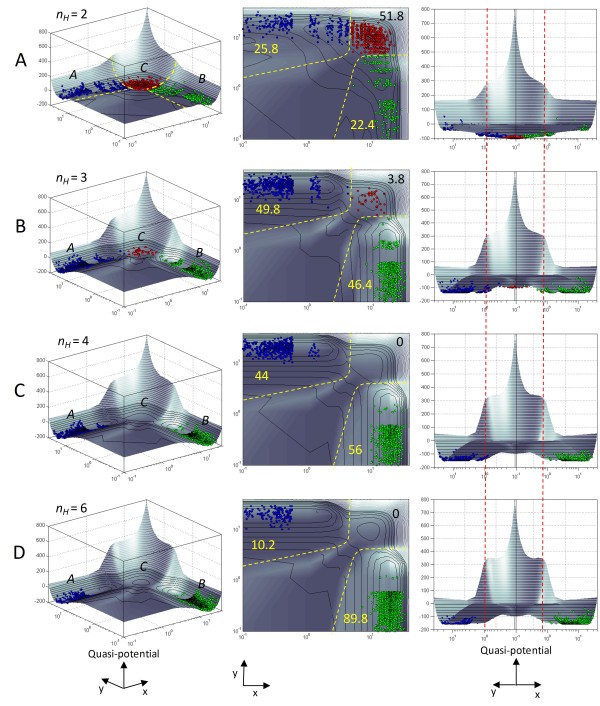Figure 4.
Valleys on the computed epigenetic landscape represent high-occupancy stable steady states, while ridges represent barriers to stochastic transitions between those stable states. For the tristable two-gene system, increasing the Hill coefficient nH, which represents the degree of ultrasensitivity in autoregulation and mutual inhibition of the two genes (see Methods), makes the ridges (barriers) higher and steeper relative to the valleys (attractors). Higher ridges reduce the probability of stochastic switching among adjacent attractors. (A) nH = 2; (B) nH = 3; (C) nH = 4; (D) nH = 10. Left Panels: Colored circles represent a population of 1000 stochastically simulated "cells" residing in the three stable steady states A (blue), B (green) and C (red). States A and B represent two alternative differentiated cell fates, and state C their common progenitor state [8,13,42]. All simulations were started from state B as the initial condition, and run to time t = 10,000 (dimensionless units). As the ridges separating the steady states grow higher, fewer cells are able to escape state B for states A and C through stochastic fluctuations. Middle Panels: Projections of the epigenetic landscape onto the x-y phase plane. Numbers refer to the percentage of simulated cells residing in the respective steady states. Dashed yellow lines show boundaries between the basins of attraction of the steady states. Right Panels: An alternative view of the epigenetic landscape. The vertical dashed red lines are guides to the eye to show that the relative distance between the steady states on the x-y phase plane does not change appreciably even as the Hill coefficient nH is increased from 2 to 6. The change in relative occupancy of the attractors can therefore be attributed to the increased height and steepness of the barriers separating them.

